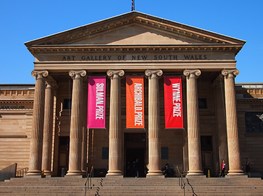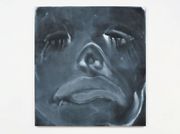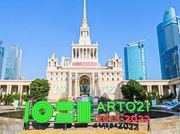The Arts & Museum Summit, Hong Kong
It has a slew of new international galleries which have only in the last half a decade started making a presence in the city; it is now the world’s third largest secondary art market at auction; and earlier this year it had its first Art Basel HK art fair. Last week Hong Kong also kicked off its first ever Arts and Museum Summit, hosted by the Asia Society. Still several years away from the completion of its first museum for visual culture, M+, constructive and critical dialogue on public institutions and collections is a sign that things are moving rapidly and seriously in a city that has only quite recently exploded onto the international art scene.
Over one and a half days 15 museum practitioners convened to discuss the long term future of museums in a four panel conference including the Tate’s director Caroline Collier; The Museum of National Art Director, Glenn Lowry; Executive Director of M+ , Lars Nittve; Director of Art Gallery of New South Wales, Michael Brand; Head of Curatorial Research at CAFA Art Museum, Beijing, Wang Chunchen; renowned Japanese artist, Hiroshi Sugimoto; and Chief Curator of Contemporary Art, Tokyo, Yuko Hasegawa. With a US$500 price tag for the summit, there was little in the way of public attendance at the Asia Society, almost ironic considering the public nature of museums and the summit’s emphasis on public engagement. But the summit did provide museum professionals with the opportunity to explore examples of contemporary practice and share their insights on the challenges facing museums today reflect on what it takes to build a museum in the 21st century.
Asia Society Director, Melissa Chiu, opened the summit with some observations on the new phenomenon of museum development in Asia, which will see most of the growth in the future with an estimated 3,000 museums in China alone over the next decade. CAFA Art Museum’s Wang Chunchen revealed that around 100 new museums per year will be built in China, many private. Chunchen remarked that the new culture of museum development of new museum models brings with it some unique challenges compared to their western counterparts, citing that laws and tax regulations are not yet adequate to cater to new museum development. State owned museums may have the advantage of more support from state resources, but it comes at the cost of “less public programs, insufficient research based exhibitions, and incomplete collections”, he stated. And private institutions face the problem of unsustainable funding system, unqualified expertise and insufficient museum teams. “For art education we also have a long way to go”, Chunchen revealed. “In China art education is not included in the general education curriculum. This is a big challenge for us.”
Of course, art education and engaging younger audiences was a point of interest with all the guest speakers. Strategies required to make museums adaptable to the demands of new audiences in a digital era was a recurring prominent theme. Collier stressed the importance of using digital media as a tool to encourage art discourse in schools. Digitizing libraries and collections for public consumption and for education would enable a broader global reach and encourage greater audience interactivity. “Without embracing digital media and moving forward with it, you’ll get left behind”, stated Lowry, adding that, “A museum is not a building or a collection. It is an idea. It has potency. It can manifest itself online and can have potency in the digital realm too… Social media is going beyond walls of institutions. What we can do online is different to what we can do on site.” Discussing the Tate National’s approach, Caroline Collier added that the digital space should complement the gallery space, rather than substitute it, as many fear. “It’s part of the experience rather than secondary to the experience. The connection to other localities and between individuals with art and other institutions and each other is complex and important.” For most institutions online audiences will far outstrip onsite audiences, and the challenge will lie in converting those that have an online interest to an onsite interaction, and vice versa. “The experience of visitors onsite and directly engaging with works of art is at the heart of what museums should be. But the capacity to extend our reach online is dramatic,” continues Lowry.
As public institutions, the civic role of museums did not go unaddressed at the summit. A utopian, “Museums are for the people, by the people,” was stated early on by Lowry, with Nittve emphasizing the museum’s role in regenerating the city, something many in Hong Kong, including the government, are banking on with M+. To do so however would also require a constant dialogue with the public in order to reflect the demographic changes and interests of the community. In the "The Museum in the City," panel Collier impressed the need to reach out and make art relevant to all people, and demonstrate how art can make a difference to society. “The need for audience participation should be even greater to make the institution more relevant”, said Collier. “It’s important to open up a multiplicity of perspectives so as not to become anodyne.” Accessibility across all demographics and social classes, not just a privileged minority, was underlined as key to the survival and relevance of a modern museum. To achieve this however would also require more collaboration and partnerships between institutions, both national and international. Fostering institutional partnerships would help engage a broader audience and the sharing of resources in budget-restricted museums makes sense, but it’s a difficult proposition for museums which are, says Lowry, notoriously reluctant to cede control. “A challenge for the future will be learning to pull those walls down,” he stated.
Dialogue with people and institutions is at the heart of museums but moving forward would also require ‘disruption’ and ‘disobedience’ in the structure and choices of museums, declared Lowry. “The infrastructure of museums works against their ability to be free,” he stated. “We want to find artists and institutions that will shake us up. We want to take risks, to take the museum out of its walls. We want to be a place where people participate, where social engagement is absolute. We want to see the museum be a catalyst for the energy of the city.” Museums in the 21st century? There’s much to look forward to.
The second installment of the summit will continue next November at the Asia Society Hong Kong.














